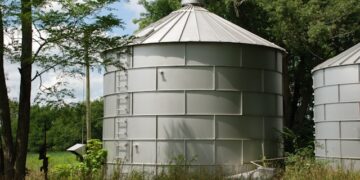Extreme weather is becoming more common in many parts of the world, and homeowners must take proactive steps to prepare. Whether it’s a hurricane, thunderstorm, high winds, or heavy rain, storms can cause severe and costly damage to your property. Fortunately, there are many smart and effective strategies you can use to protect your home from storm damage.
This guide will walk you through the best ways to storm-proof your home, reduce risks, and ensure your family stays safe and secure when the next storm hits.
Inspect and Maintain Your Roof
Your roof is your first line of defense against the elements. Damaged or weak roofing can easily give way under heavy rain, wind, or flying debris.
What to do:
-
Inspect your roof for missing, curled, or cracked shingles.
-
Secure loose tiles and replace any damaged materials.
-
In hurricane-prone areas, consider installing hurricane straps or clips to reinforce the roof-to-wall connection.
Taking these steps is one of the most important ways to protect your home from storm damage and water leaks.
Clear Gutters and Downspouts
Storms bring intense rainfall, and your home must be ready to handle it. Clogged gutters and downspouts can lead to overflowing water, roof damage, and even flooding around your foundation.
Fall maintenance tip:
-
Clean out leaves, twigs, and debris from gutters regularly.
-
Make sure downspouts direct water at least 3–4 feet away from your home.
-
Consider installing gutter guards to reduce future buildup.
Storm damage prevention starts with ensuring that water flows away from your house, not into it.
Seal Windows and Doors
When preparing your home for a storm, sealing all entry points is crucial. High winds can exploit even the smallest cracks, letting in water and debris.
How to seal your home:
-
Apply weather stripping around windows and door frames.
-
Use high-quality caulk to fill in gaps or cracks.
-
Consider installing storm shutters or upgrading to impact-resistant windows, especially if you live in a hurricane-prone region.
Sealing your home helps prevent interior damage and improves energy efficiency year-round.
Trim Trees and Remove Dead Branches
During high winds, overhanging or weakened tree limbs can break off and crash into your home, causing significant damage.
Tree safety tips:
-
Trim back limbs that hang over your roof or power lines.
-
Remove any dead or diseased branches.
-
Keep trees well-maintained to promote healthy growth and strong root systems.
Trimming trees is a simple yet highly effective home storm safety tip that can prevent broken windows and roof punctures.
Secure Outdoor Furniture and Fixtures
Anything that isn’t bolted down outside your home can become a projectile in high winds. This includes patio furniture, garden tools, grills, and even decorations.
Before the storm:
-
Anchor large items like sheds or trampolines.
-
Store lightweight furniture, toys, and planters in a garage or shed.
-
Tie down larger items with heavy-duty straps or bungee cords.
This simple step to storm-proofing your home can prevent damage to both your house and your neighbors.
Install a Sump Pump or Check Your Drainage
If you live in an area prone to heavy rain, having a working drainage system is essential to avoid basement flooding.
Storm drainage checklist:
-
Make sure your sump pump is working and test it regularly.
-
Have a backup battery system or generator in place.
-
Check for standing water around your foundation and improve grading if necessary.
This is a critical part of storm damage prevention that can save you thousands in water damage repairs.
Emergency Power Options
Storms often lead to power outages, so having a backup power solution is vital for safety and comfort.
Backup power solutions:
-
Use a portable generator to power essentials like your refrigerator, sump pump, or heating system.
-
Install surge protectors to protect electronics from power spikes.
-
Keep backup batteries charged for flashlights, radios, and phones.
Preparing your home for a storm includes being ready for prolonged power loss.
Create a Family Emergency Plan
Protecting your home also means protecting the people inside it. Make sure your family knows what to do in the event of an emergency.
Steps to take:
-
Designate a safe area in your home, such as a basement or interior room.
-
Create an emergency communication plan with contacts and meeting points.
-
Assemble an emergency kit with water, non-perishable food, flashlights, medications, blankets, and first-aid supplies.
Every storm readiness plan should include steps for keeping your family informed and safe.
After the Storm: Inspect and Document Damage
Once the storm has passed, assessing your home for damage quickly is important for both safety and insurance purposes.
Post-storm checklist:
-
Check your roof, windows, and foundation for visible damage.
-
Look out for fallen power lines, gas leaks, or flooding.
-
Take clear photos of all damage for your insurance claim.
-
Contact your insurer as soon as possible to report any issues.
Timely documentation ensures a smoother recovery process and faster insurance payouts.
Final Thoughts
Storms can be unpredictable, but your home’s preparedness doesn’t have to be. By following these best practices to protect your home from storm damage, you significantly reduce the risk of costly repairs and keep your loved ones safe. Whether you live in a coastal area prone to hurricanes or a region with sudden thunderstorms, storm-proofing your home is a smart, long-term investment.









